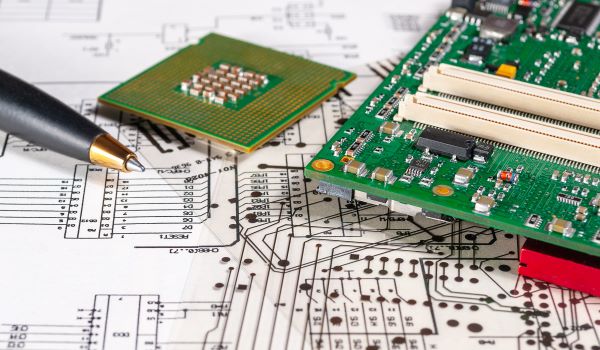
 Electronic design is a vital profession that plays a crucial role in the development of various digital products and solutions. It involves the creation, testing, and implementation of electronic circuits, components, and systems that power modern devices such as PCs, tablets, smartphones, and other mobile devices. Electronic designers are responsible for developing and optimising the performance of these devices, ensuring that they meet the desired specifications, are cost-effective, and are delivered within the required timeframe.
Electronic design is a vital profession that plays a crucial role in the development of various digital products and solutions. It involves the creation, testing, and implementation of electronic circuits, components, and systems that power modern devices such as PCs, tablets, smartphones, and other mobile devices. Electronic designers are responsible for developing and optimising the performance of these devices, ensuring that they meet the desired specifications, are cost-effective, and are delivered within the required timeframe.
Electronic designers contribute significantly to the development of PCs and tablets, which are some of the most widely used electronic devices today. They work closely with cross-functional teams, including software developers, mechanical engineers, and manufacturing experts, to design and develop printed circuit boards (PCBs), integrated circuits (ICs), and other electronic components that form the core of these devices. They also ensure that the designed components are compatible with the device’s software and hardware and that they meet the necessary standards and regulations.

Crucial Skills and Qualifications
Electronic design careers require a combination of technical and practical skills to excel. Essential skills include a strong foundation in electronics theory, circuit analysis, and simulation, as well as the ability to work with various software and hardware design tools. Proficiency in software tools is crucial for creating accurate and efficient designs. Additionally, hands-on experience with hardware prototyping and testing equipment is necessary to validate and refine designs.
Adaptability and problem-solving abilities are vital in the dynamic electronic design industry. As technology advances rapidly, professionals in this field must stay up-to-date with emerging trends and tools. Adaptability allows them to pivot quickly and apply their skills to new projects and challenges. Problem-solving abilities enable them to overcome obstacles and optimise designs for optimal performance, reliability, and cost-effectiveness.
Educational Pathways
Formal education in electrical or computer engineering provides numerous benefits for those looking to enter the electronic design field. Firstly, it instils a comprehensive understanding of electronic concepts and theories, allowing aspiring designers to create innovative and reliable products. Secondly, it exposes students to various software and hardware platforms, enabling them to develop versatile skill sets. Finally, a degree program offers opportunities for hands-on projects and collaborations, fostering valuable practical experience.
In the UK, ongoing learning and professional development are equally important for electronic design professionals. The field is constantly evolving, and engineers must stay updated on emerging technologies, software updates, and industry standards. Attending conferences, workshops, and online courses helps professionals expand their knowledge and maintain their competitiveness. Joining professional organisations such as the Institution of Engineering and Technology (IET) or the British Computer Society (BCS) also provides access to resources, networking opportunities, and continuing education options.

Building a Solid Professional Portfolio
Building a solid professional portfolio is essential for professionals to showcase their skills and attract potential employers. A well-assembled portfolio can effectively communicate an individual’s capabilities, experience, and passion for electronic design. To create a compelling portfolio, it’s important to include a variety of projects that demonstrate different aspects of electronic design. This may include PCB layouts, schematics, and firmware designs. When documenting projects, it’s crucial to provide clear explanations of the design process, the challenges faced, and how they were overcome. Additionally, including images, videos, and test results can help bring the project to life and demonstrate its effectiveness.
One effective way to organise a portfolio is to categorise projects based on their type, such as analogue, digital, or microcontroller-based designs. This allows potential employers to quickly assess an individual’s expertise in specific areas of electronic design. It’s also helpful to include a summary or abstract for each project, highlighting its key features and accomplishments. For inspiration, individuals can look to example portfolios created by experienced electronic design professionals. These portfolios often showcase a range of projects, from simple circuits to complex systems, and provide insight into the designer’s thought process and problem-solving abilities.
A career in electronic design offers exciting opportunities for creative and innovative individuals to make a meaningful impact on society. With the increasing demand for smart devices, renewable energy solutions, and cutting-edge technologies, the field is poised for continued growth and evolution. Aspiring electronic designers can capitalise on this trend by developing their skills in software programming, hardware development, and critical thinking. By doing so, they can unlock doors to diverse and fulfilling career paths, ranging from entrepreneurship to research and development.
Electronic design is not just a career; it’s a chance to shape the future. As technology continues to advance and play a larger role in our daily lives, the need for skilled electronic design professionals will only grow stronger.

